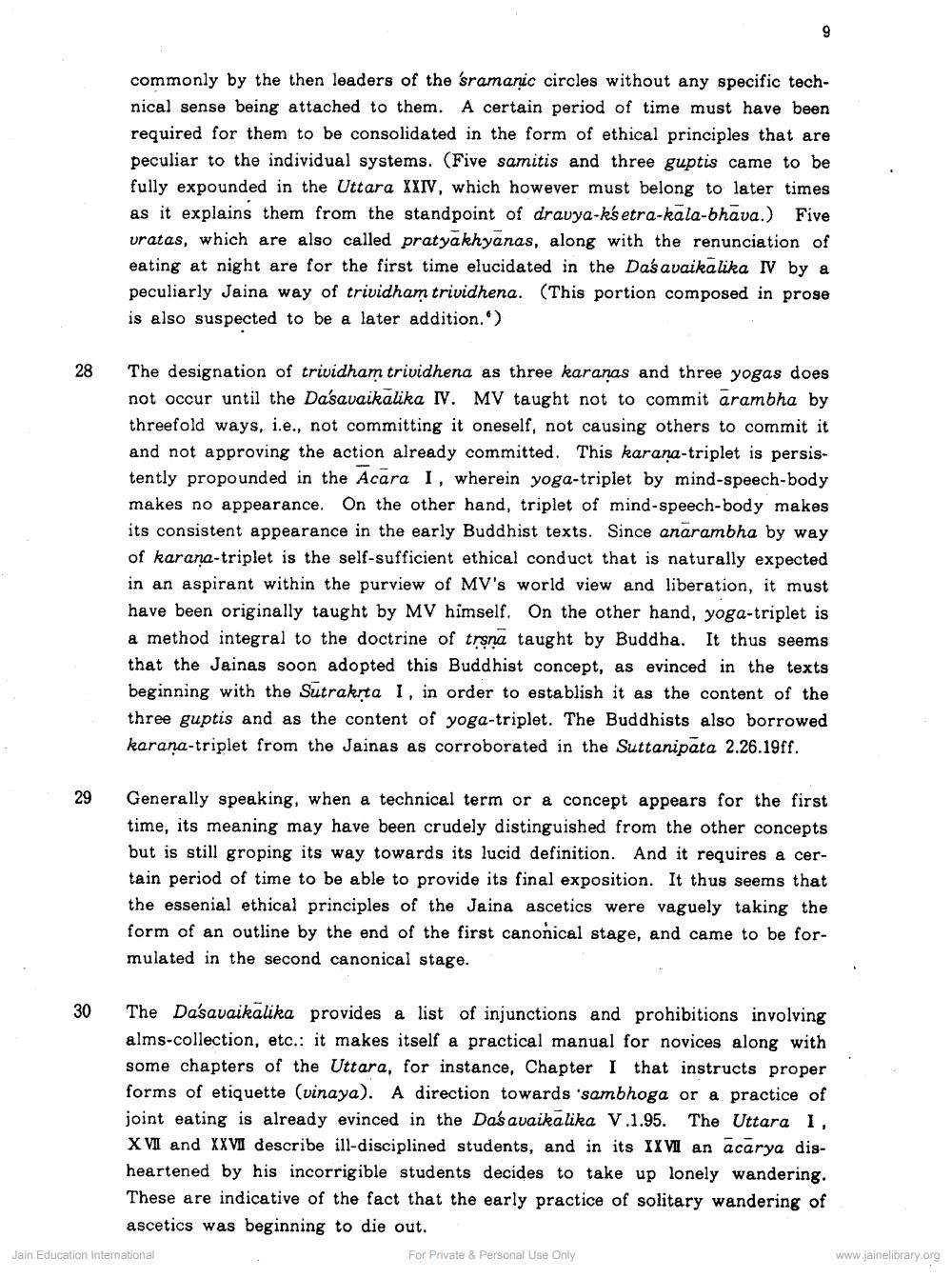________________
commonly by the then leaders of the sramanic circles without any specific technical sense being attached to them. A certain period of time must have been required for them to be consolidated in the form of ethical principles that are peculiar to the individual systems. (Five samitis and three guptis came to be fully expounded in the Uttara XXIV, which however must belong to later times as it explains them from the standpoint of dravya-ks etra-kāla-bhāva.) Five uratas, which are also called pratyakhyanas, along with the renunciation of eating at night are for the first time elucidated in the Das avaikālika IV by a peculiarly Jaina way of trividham trividhena. (This portion composed in prose is also suspected to be a later addition.)
The designation of trividham trividhena as three karanas and three yogas does not occur until the Dasavaikalika IV. MV taught not to commit arambha by threefold ways, i.e., not committing it oneself, not causing others to commit it and not approving the action already committed. This karana-triplet is persistently propounded in the Acara I, wherein yoga-triplet by mind-speech-body makes no appearance. On the other hand, triplet of mind-speech-body makes its consistent appearance in the early Buddhist texts. Since anarambha by way of karana-triplet is the self-sufficient ethical conduct that is naturally expected in an aspirant within the purview of MV's world view and liberation, it must have been originally taught by MV himself. On the other hand, yoga-triplet is a method integral to the doctrine of trsna taught by Buddha. It thus seems that the Jainas soon adopted this Buddhist concept, as evinced in the texts beginning with the Sutrakrta I, in order to establish it as the content of the three guptis and as the content of yoga-triplet. The Buddhists also borrowed karana-triplet from the Jainas as corroborated in the Suttanipata 2.26.19ff.
Generally speaking, when a technical term or a concept appears for the first time, its meaning may have been crudely distinguished from the other concepts but is still groping its way towards its lucid definition. And it requires a certain period of time to be able to provide its final exposition. It thus seems that the essenial ethical principles of the Jaina ascetics were vaguely taking the form of an outline by the end of the first canonical stage, and came to be formulated in the second canonical stage.
The Da'savaikalika provides a list of injunctions and prohibitions involving alms-collection, etc.: it makes itself a practical manual for novices along with some chapters of the Uttara, for instance, Chapter I that instructs proper forms of etiquette (vinaya). A direction towards 'sambhoga or a practice of joint eating is already evinced in the Das avaikalika V.1.95. The Uttara I, X VII and XXVI describe ill-disciplined students, and in its XXVI an acarya disheartened by his incorrigible students decides to take up lonely wandering. These are indicative of the fact that the early practice of solitary wandering of
ascetics was beginning to die out. Jain Education International For Private & Personal Use Only
www.jainelibrary.org




